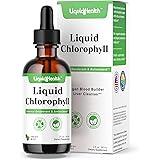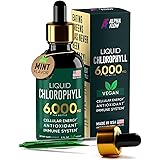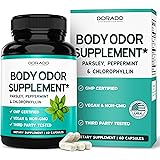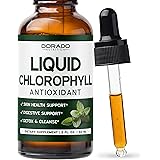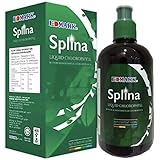Recognizing the profound challenges associated with substance use disorders, individuals often require comprehensive support systems for their journey toward recovery. As highlighted in the accompanying video, medical detoxification stands as a critical first step for many grappling with drug or alcohol addiction. Indeed, an estimated 85% of individuals seeking treatment for substance dependence will require some form of medically supervised withdrawal to manage the severe physiological and psychological symptoms that can arise when discontinuing substances. This initial phase, often lasting approximately five to seven days, is not merely about enduring discomfort but involves a sophisticated process where the body systematically purges toxic substances under rigorous medical supervision.
The imperative for medical supervision during detoxification is frequently underestimated. Without expert clinical oversight, the process of withdrawal, particularly from substances such as alcohol or benzodiazepines, can quickly escalate from uncomfortable to life-threatening. The body, having become accustomed to the constant presence of these compounds, undergoes significant neuroadaptation. When the substance is removed, the central nervous system can become overactive, leading to severe symptoms like grand mal seizures, which can result in irreparable neurological damage or even fatality. Therefore, a structured medical environment is absolutely essential for mitigating such acute risks.
Understanding Physical Dependence and Its Manifestations
Physical dependence represents a profound physiological alteration where the body adjusts its normal functioning to accommodate the regular presence of a substance. This adaptation causes the body to require the substance for basic operational equilibrium; its absence then triggers a cascade of adverse reactions known as withdrawal symptoms. For example, consistent alcohol consumption modulates GABA receptors, which are responsible for inhibitory neurotransmission. When alcohol is suddenly absent, the brain experiences an excitatory surge, leading to tremors, anxiety, hypertension, and in severe cases, delirium tremens, a potentially fatal condition characterized by confusion and hallucinations.
Withdrawal symptoms are not simply unpleasant sensations; they are profound physiological distress signals. Common manifestations include intense sweating, debilitating anxiety, depressive episodes, and persistent insomnia, creating a deeply uncomfortable and often terrifying experience. Furthermore, significant gastrointestinal distress, such as nausea and vomiting, can be present, severely impeding a person’s ability to maintain hydration and nutrition. These physical symptoms are frequently compounded by an increased heart rate, the onset of visual or auditory hallucinations, and the grave risk of seizures, underscoring the necessity of continuous medical monitoring.
Substances Necessitating Professional Medical Detoxification
A broad spectrum of psychoactive substances can induce physical dependence severe enough to mandate medical detox intervention. Alcohol and benzodiazepines (such as Xanax or Valium) are particularly notorious for their severe and potentially fatal withdrawal syndromes due to their depressant effects on the central nervous system. The rapid cessation of these substances can precipitate hyper-excitability, leading to seizures and cardiac events, thus making unassisted withdrawal an extremely hazardous endeavor. Medical teams are equipped to manage these acute neurological and cardiovascular risks through pharmacotherapy.
Opioids, which encompass prescription pain relievers like oxycodone and illicit drugs such as heroin or fentanyl, are another class of substances requiring careful medical detoxification. While opioid withdrawal is generally not life-threatening, it is excruciatingly painful and profoundly debilitating. Symptoms often include intense muscle aches, severe abdominal cramping, diarrhea, vomiting, and extreme agitation, which collectively make self-detoxification incredibly challenging. Synthetic drugs, including substances like kratom or bath salts, also carry significant risks; their unpredictable pharmacokinetics can lead to severe and idiosyncratic withdrawal profiles, further complicating unsupervised cessation.
The Comprehensive Clinical Assessment in Medical Detox
Upon admission to a medical detox facility, patients undergo an extensive and meticulous clinical assessment, which forms the bedrock of a personalized treatment strategy. This process is far more than a simple intake questionnaire; it involves a battery of screenings designed to paint a holistic picture of the individual’s health status. Clinicians systematically evaluate for the presence and severity of substance use disorders, meticulously documenting the type, duration, and quantity of substances consumed. This detailed history is crucial for anticipating specific withdrawal syndromes and their potential complications.
Furthermore, this comprehensive evaluation critically screens for co-occurring mental health disorders, such as anxiety, depression, or PTSD, which frequently coexist with substance dependence and can profoundly influence the detox experience. Any underlying medical conditions, from cardiovascular issues to diabetes, are also thoroughly assessed, as these can significantly impact a patient’s stability during withdrawal and necessitate specific medical management. The severity of potential withdrawal symptoms is dynamically evaluated using validated clinical scales, allowing for precise pharmacological intervention and proactive risk mitigation. This initial, thorough diagnostic work ensures that all aspects of a patient’s health are considered when formulating their individualized treatment plan.
Pharmacological Interventions During Detoxification
A cornerstone of modern medical detoxification is the judicious application of pharmacotherapy, wherein specific addiction medications are utilized to alleviate withdrawal symptoms and diminish intense cravings. These medications function as crucial tools, acting as a bridge to stability by counteracting the physiological chaos induced by substance cessation. For individuals withdrawing from alcohol, medications such as benzodiazepines (e.g., Librium or Valium) are often administered to prevent seizures and reduce agitation, thereby tapering the central nervous system’s excitability. Additionally, naltrexone, available in an extended-release injectable form known as Vivitrol, can be employed post-detoxification to help prevent relapse by reducing alcohol cravings and blocking opioid receptors.
For those navigating opioid withdrawal, a distinct set of medications is employed to manage the acute physical discomfort and cravings. Suboxone, a combination of buprenorphine and naloxone, functions as a partial opioid agonist, meaning it occupies opioid receptors to reduce withdrawal symptoms without producing the euphoric effects of full agonists. Similarly, Sublocade offers a monthly injectable form of buprenorphine, providing sustained relief. Methadone, a full opioid agonist, is also frequently utilized in controlled settings for its ability to stabilize opioid-dependent individuals. These agents are carefully titrated and administered under strict medical guidance, effectively transforming a potentially agonizing experience into a manageable process that focuses on patient safety and comfort.
Factors Influencing Detoxification Duration and Intensity
The trajectory and intensity of a medical detox are inherently unique to each individual, akin to navigating a complex river system where currents and obstacles vary significantly. The type of substance abused is a primary determinant; for instance, detoxification from long-acting opioids may present a protracted withdrawal syndrome compared to shorter-acting substances. The duration of substance use also plays a critical role, as prolonged exposure leads to more entrenched physical dependence and, consequently, more severe and prolonged withdrawal symptoms. Similarly, the quantity of a substance regularly consumed directly correlates with the physiological burden placed upon the body, necessitating more intensive medical management.
Furthermore, individual biological and physiological factors exert a substantial influence. A person’s unique body chemistry, including their metabolic rate and genetic predispositions, dictates how rapidly substances are processed and eliminated. Body weight and overall health status, including the presence of any co-occurring medical conditions, can also modify the detoxification experience. These multifaceted elements necessitate a highly individualized approach to treatment planning, where a standard “one-size-fits-all” protocol is consistently eschewed in favor of bespoke medical care designed to meet a person’s specific needs and optimize their safety and comfort throughout the detox process.
Selecting an Optimal Medical Detoxification Facility
The choice of a medical detox facility represents a pivotal decision in the continuum of care for substance use disorders. Potential patients and their families should prioritize facilities that are fully licensed and accredited by reputable national organizations, such as The Joint Commission or CARF (Commission on Accreditation of Rehabilitation Facilities). This accreditation serves as an external validation that the facility adheres to stringent quality standards, patient safety protocols, and ethical practices, thereby providing an assurance of professional and competent care. The presence of such credentials signifies a commitment to excellence that extends beyond basic requirements.
Moreover, an optimal facility will boast an experienced, licensed, and multidisciplinary staff, including physicians, nurses, and clinical therapists, who are adept at managing complex medical and psychiatric needs. These professionals must possess specialized training in addiction medicine and be capable of responding promptly and effectively to any medical complications that may arise during withdrawal. Furthermore, 24-hour access to medical treatment and supervision is non-negotiable; round-the-clock monitoring ensures that any emergent symptoms or crises are addressed immediately, providing continuous patient safety and peace of mind. Such comprehensive oversight is integral to a successful and safe medical detox, setting the foundation for sustained sobriety and long-term recovery.
The Continuum of Care Beyond Medical Detox
Medical detoxification, while undeniably essential, is properly viewed as merely the initial phase in the broader journey of addiction recovery. It effectively stabilizes the individual by managing acute withdrawal symptoms, but it does not address the underlying psychological, emotional, and behavioral contributors to substance use. Consequently, patients in medical detox are typically transitioned to a more structured and supportive environment once physiological stability is achieved. This subsequent phase commonly involves stepping down to residential treatment, where individuals reside within a facility and participate in intensive therapeutic modalities, including individual counseling, group therapy, and educational sessions. This immersive setting allows for a deeper exploration of addiction’s roots and the development of coping mechanisms in a safe, substance-free environment.
Following residential treatment, the recovery path often progresses to outpatient treatment, offering varying levels of intensity depending on individual needs. Outpatient programs provide continued therapeutic support while allowing individuals to reintegrate into their daily lives, balancing work, family, and other responsibilities. This phase is crucial for cementing the skills learned in earlier stages and building a robust support network. The staggered approach, moving from the intensive medical stabilization of medical detox through residential care and into flexible outpatient programs, is purposefully designed to progressively build resilience and equip individuals with the tools necessary to prevent relapse, fostering a sustained and meaningful recovery from substance use disorder.


